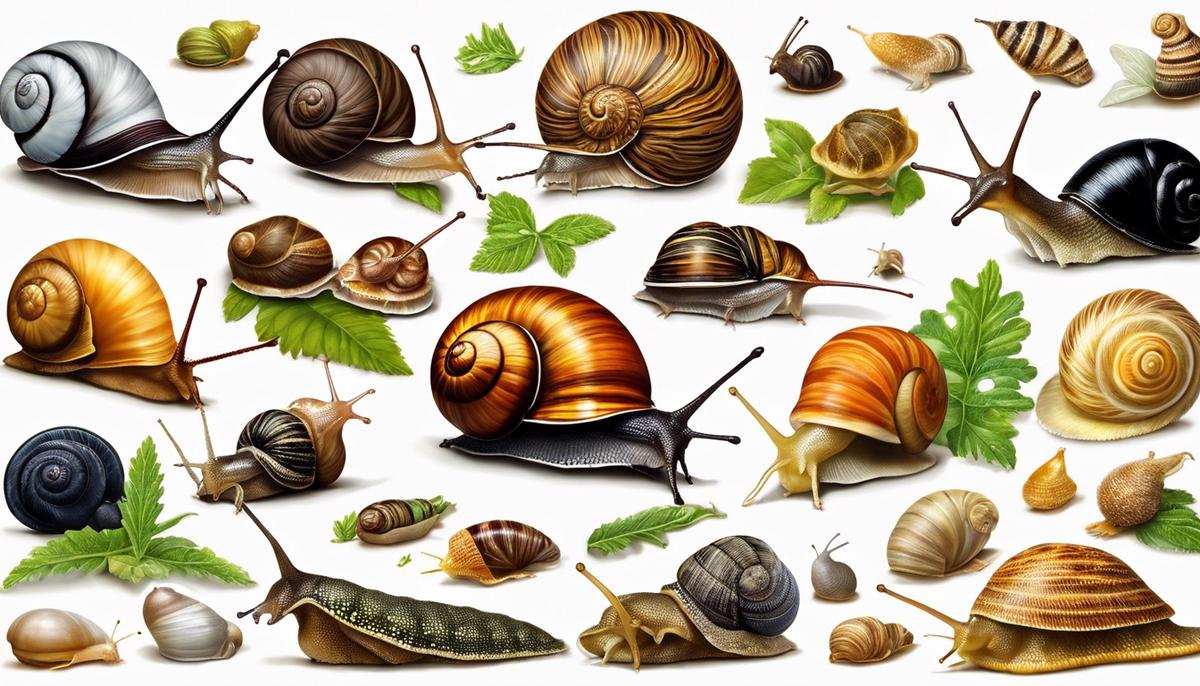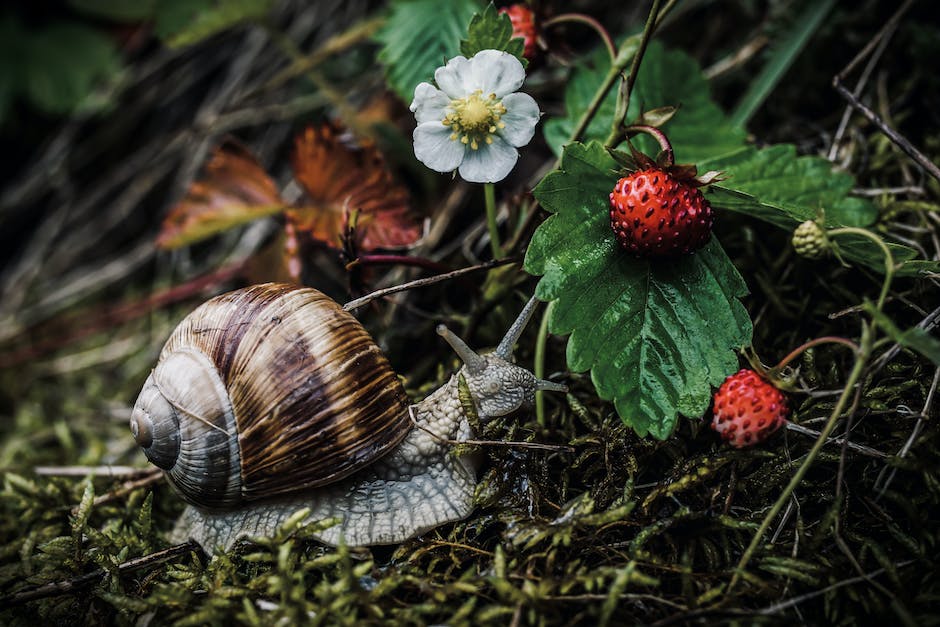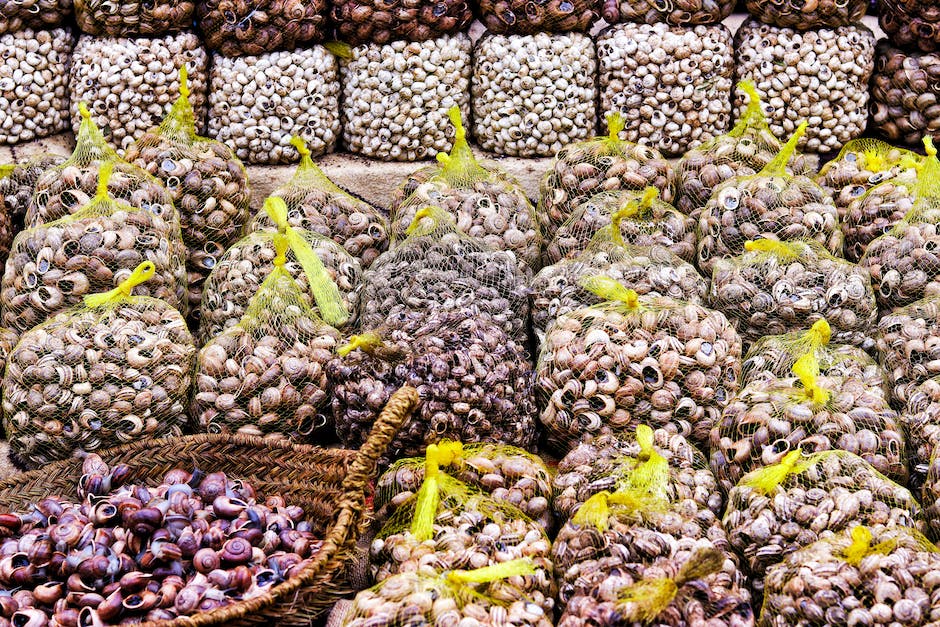Effective Strategies to Eliminate Garden Snails

Maintaining a lush and flourishing garden requires a keen eye and dedicated effort to manage and counteract threats posed by unwanted pests. One such common nuisance is the garden snail. Certainly, these mollusks are not without their charm, but they can wreak substantial havoc on a thriving garden, transforming it into a playground for their seemingly insatiable hunger. Throughout this discourse, we focus on equipping you with the knowledge necessary to recognize various snail and slug species, understand their habits, and comprehend the negative impact they may pose to your green space. We also delve into identifying beneficial snail predators that can be introduced to your garden to help control their population. Lastly, we will explore the pros and cons of using chemical control methods alongside eco-friendly, homemade snail control remedies.
Identifying Snails and Slugs
Detecting Slithery Slugs and Subtle Snails: Your Essential Guide.
There’s no dividing line in the soil of passionate gardening – you either fall in love with the lush leaves, the splendid colors and the thrill of seeing your seeds sprout or you don’t. But let’s be frank, there are a couple of nuisance creatures that have the power to turn the most ardent gardening efforts into a nightmare. Enter, snails and slugs.
By day, your beautifully manicured garden flaunts an array of vibrant flowers. But, as nightfall arrives, these sneaky marauders show their true colors. Fear not, ardent gardeners – there’s a method to their mollusk madness. Understanding their habits, distinctive characteristics, and habitats can lead to an effective recognition strategy.
So, let’s dive Snail-Shell first into this fascinating world!
- Characteristics: Superficially, snails and slugs look pretty similar – soft, squishy, and undeniably slimy. But the snail has a shell—a house on its back, if you will. This characteristic shell is a good start to distinguish the slow steady garden snail from its shell-less counterpart, the slug.
- Footprints and Trails: Slugs and snails slide over the soil secreting a slimy mucus that aids their locomotion. If you spot shiny and sticky trails on your garden paths or plant leaves, consider this residue as sure signs of these creatures’ nocturnal romp.
- Feeding Habits: Both these critters are fond of fresh plant produce. Holes in leaves, vegetables, flowers, as well as seedlings, are telltale signs of a snail or slug invasion. They also feast on decaying plant matter and fungi, aiding a balanced ecosystem in your garden.
- Habitats: Understanding their preferred habitats aids in effective recognition. They tend to lurk in dense vegetation, under pots, leaves, rocks, logs, and anywhere else that provides them shelter from the hot sun.
- Egg Observation: Discovering clusters of gelatinous semi-transparent eggs in the soil is a clear indicator for the presence of these creatures. While snails lay about 30-120 eggs at a time, slugs can lay approximately 50 eggs several times a year, typically hidden beneath the soil surface or in compost heaps.
- Types of Snails and Slugs: Knowing the local species prevalent in your region can significantly aid identification. For instance, the brown garden snail boasts a large, round shell while the leopard slug flaits an impressive long, slim, keeled body with a spotty pattern.
Finally, remember, while snails and slugs can be a nuisance to your leafy babies, they are an essential part of the ecosystem. Effective recognition not only contributes to managing their population but understanding the nourishing biodiversity that makes up your garden space.
So, grab a torch, slip on those gloves, and channel your inner ‘Snail and Slug Whisperer’. It’s time to demystify the mollusk pandemonium lurking beneath your garden’s lush greens!

Snail Natural Predators
Enlisting Nature’s Army: Snails’ Natural Predators and their Beneficial Roles
Diving deep into the world of gastropods such as snails and slugs paves the way for a new perspective on understanding their varied roles in the ecosystem. Focusing on these slimy denizens brings into focus their diverse predators and how they could be used beneficially. Without further ado, let’s engage our gears and delve into this intriguing ecosystem dynamics.
Natural Predators of Snails
Firstly, various bird species form the leading battalion responsible for keeping the snail population in check. Birds such as robins, thrushes, magpies, and blackbirds are adept and regular hunters of snails and slugs. Their elevated vantage points and sharp eyes easily locate these slow-moving creatures amidst vegetation or on bare ground.
In the second line of predators are mammals such as hedgehogs, shrews, foxes, and badgers. These earthbound species traverse the same terrain as snails and slugs, making them effective predator counterparts. In particular, hedgehogs and shrews specialize in such pursuits for sustenance, thanks to their sharp, snail-dismantling teeth.
Reptiles and amphibians constitute the third defensive line against snails and slugs. Frogs, toads, snakes, and lizards maintain an unwavering interest in snails and slugs. Their acute senses easily zero in on these creatures, even under the shell—consider it nature’s hide and seek!
Insects, such as beetles, ants, and earwigs, also join the ranks as predators of snails and slugs. Despite their small size, these insects often hunt in troops, overwhelming their prey through sheer numbers and aggression.
Lastly, other snails and slugs themselves are sometimes guilty of cannibalistic tendencies, reinforcing the concept of survival of the fittest within the ecosystem.
Mobilizing Natural Snail Predators for Benefits
So, how can these facts be put towards beneficial use? The answer rests on natural pest control measures. By encouraging the habitats of these predators in your garden or farm, the snail and slug population can naturally be kept under control.
For instance, birdhouses and feeders can invite snails’ avian predators. Similarly, installing small ponds or wet spots can attract amphibians. Providing log piles or leaf litter could attract beetles and hedgehogs. Promoting such habitats works twofold – it aids local biodiversity and serves as an effective, eco-friendly biological control method against snails and slugs.
Moreover, farmers and gardeners can introduce certain species of beetles and nematodes that are lethal to slugs and snails. Their release can help suppress slug and snail populations without resorting to harmful chemical pesticides.
In conclusion, understanding the snail’s natural predators aids in managing their numbers while promoting biodiversity. So, roll up your sleeves and commence your very own ‘pest control’ venture right in the heart of your backyard, courtesy of Mother Nature!

Chemical and Homemade Snail Control
The invincible army of gastropods in your garden can truly be a gardener’s nightmare. Although our slimy friends play an important role in the ecosystem, they can also pose a significant threat to the well-being of a vegetable plot, a flower bed, or cherished ornamental plants. But worry not, intrepid gardeners – there are effective organic and chemical ways to mitigate the snail infestation without causing irreversible harm to the ecosystem. Now, let us delve into the methods to make snail pesticides at home and the other effective chemical alternatives.
An efficient homemade snail pesticide can be brewed using simple ingredients that can easily be found in your kitchen. Beer is an excellent choice for this purpose, because much like humans, snails are also attracted to it. Placing shallow containers filled with beer around the affected area can act as a snail trap, thereby reducing the invasion.
Nevertheless, this method requires regular maintenance and is not the most rain-resistant, due to which exploring other options becomes a necessity. Another organic remedy requires crushed eggshells scattered around the base of the plants. The sharp edges deter snails and slugs from crawling over, providing a natural and environment-friendly protective measure.
Apart from these DIY solutions, there are many commercial chemical pesticides available on the market designed specifically to combat snail and slug infestations. Metaldehyde and iron phosphate-based pellets are among the most effective ones. Whilst Metaldehyde is highly potent and fast-acting, it is also toxic to pets and wildlife, so it must be used conscientiously. Iron-phosphate based treatments, on the other hand, are safer for the broader environment and still very effective against snails.
Moreover, don’t forget the benefits of natural predators. Certain bird species, reptiles, amphibians, and specific insects feasting on these gastropods can be the ultimate biological control agent. Attracting and introducing these species into your garden, especially the ground beetle and specific nematodes, can be an extremely beneficial and sustainable way of managing the snail population.
Consider also the option of creating snail and slug repelling barriers with materials such as copper tape or wool pellets. Additionally, maintaining proper sanitation by disposing of decayed leaves and other garden waste timely can also significantly reduce snail populations.
Controlling snails and slugs doesn’t necessarily mean declaring war on them – it’s about promoting biodiversity and maintaining a balanced ecosystem within your garden. After all, they’re a part of nature too, just sometimes a little too enthusiastic about sharing our green spaces! So, go forth and coexist harmoniously with these tiny gastropods, using these organic and chemical remedies as your secret weapon.

Dealing with snails and slugs charging through your garden, feasting on your beloved plants is truly a gardener’s nightmare. Yet, there is hope and potential relief through informed solutions. By understanding our slimy antagonists better, recognizing their natural predators, and considering the leverage of chemical or eco-friendly methods, we can turn the tide in our favor. No method promises instantaneous results; after all, Rome wasn’t built in a day. However, with patience, perseverance, and the guidance delivered in this resource, every garden owner stands a fair fight in maintaining the beauty and health of their plant life while also coexisting with nature’s vast and complex ecosystem.



